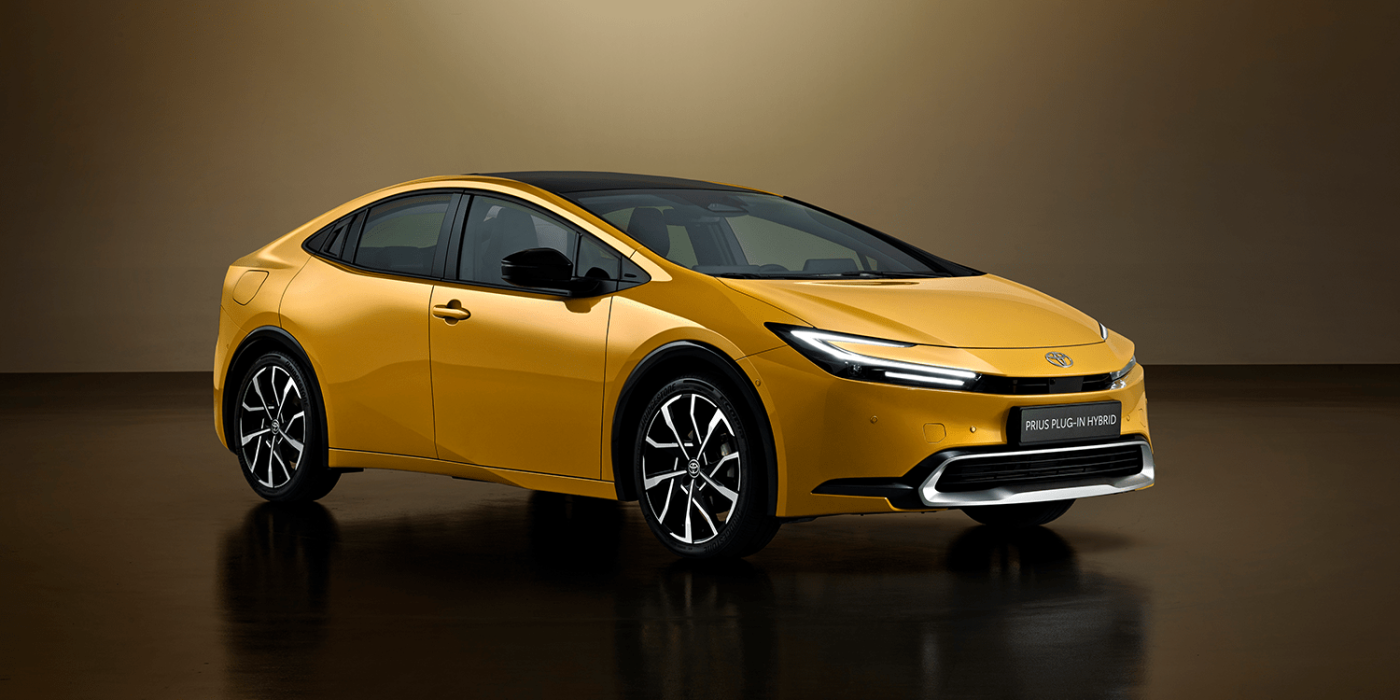Toyota has presented the 5th-gen Prius
Toyota has unveiled the fifth generation of its hybrid pioneer Prius and is adapting the drive concept, at least for Europe. From next year, the Prius will only be offered as a plug-in hybrid in Europe.
++ This article has been updated. Kindly continue reading below. ++
However, the full hybrid concept will not be completely discarded; outside Europe, the Prius will continue to be available with this drive system. But let’s first look at the PHEV, which is exclusively on offer in Europe: the powertrain has a system output of 164 kW and is supposed to ensure “responsive acceleration”, according to Toyota’s press release.
To achieve this, the Japanese combine a 111 kW 2.0-litre petrol engine and “a 120 kW/160 hp transaxle electric motor on the front axle”, according to the statement. When asked, a Toyota spokesperson states that “hybrid transaxle” is the term used to describe the front-wheel drive system “where everything is housed in one casing (electric motor, planetary gearbox and differential)”. So this designation has nothing to do with the actual transaxle approach used in internal combustion engines (engine in the front, transmission in the rear) or other plug-in hybrids (internal combustion engine in the front, electric motor in the rear).
The battery itself has been enlarged to 13.6 kWh and is thus supposed to offer an increased e-range of more than 50 percent “to be able to cover the majority of everyday journeys locally emission-free”. However, the exact e-range is not specified. The battery is no longer placed under the boot, but between the axles under the rear seat, which should contribute to a low centre of gravity. The lithium-ion battery is charged by cable or via the optional solar roof, but Toyota does not specify the charging capacity.
Outside Europe, there will also be a parallel full hybrid. This is available in two versions, as before with a 1.8-litre petrol engine and also a 2.0-litre engine. With the latter, the power output is 144 kW.
Whereas in the fourth generation the Prius Hybrid and Prius Plug-in Hybrid were visually distinct from each other (and the length also differed by seven centimetres), the bodies are now no longer different. At 4.60 metres, the PHEV is even 4.5 centimetres shorter. However, since the wheelbase has been stretched by 50 millimetres to 2.75 metres (for the repositioned battery), there should be a little more space in the interior.
For aerodynamic reasons, however, the “iconic” wedge shape remains, according to Toyota. However, this has been reinterpreted, and in generation five the Japanese company opted for “more elegant and modern lines”. In other words, the curlicues and moulded body parts that have been characteristic of Toyota’s recent models have been kept much simpler.
Toyota has not yet announced prices at the presentation. What is clear, however, is that the Prius will be available in European markets in the summer of 2023. This was no longer the case with the fourth generation, at least for the full hybrid, which was withdrawn from the market in 2020. The stand-alone PHEV, however, continued to be offered.
Update 02 March 2023
A little over three months after Toyota revealed the fifth-generation Prius, the company announced plans to begin sales of the Prius Plug-in Hybrid (PHEV) in Japan on March 15. Prius HEV models were launched in Japan in January this year. Priced at 4.6 million yen (about 33.600 USD), the Prius PHEV will only be available in a sole Z grade. Produced at its Tsutsumi Plant, Toyota is targeting sales of 450 units a month in Japan (Reference: Prius HEV: 4,300 units per month). In Europe, the new Prius will only be offered as a plug-in hybrid.
toyota.eu, global.toyota (update)





3 Comments